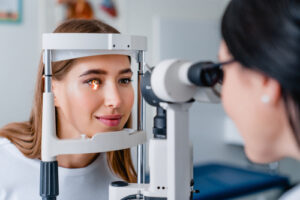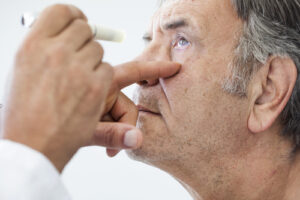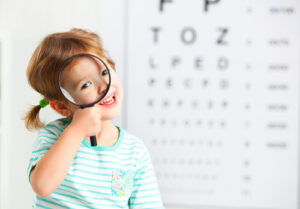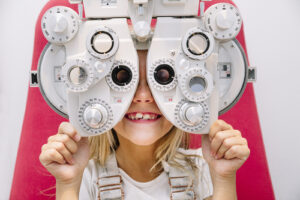How Often Do I Need to Have an Eye Exam?
How do you know when it’s time for an eye exam? The answer may surprise you.
An eye exam is not just an appointment to check if your prescription needs to be updated. Visits to your eye doctor should not only be reserved for when you have a concern about your vision or notice a change.
An eye exam is one of the most important aspects of maintaining healthy eyes and clear vision. That’s why it’s so important to schedule regular eye exams.
Not everyone needs eye exams on the same schedule. The frequency depends on several different factors, including your age and health history.
Keep reading to find out how often you need to have an eye exam!
What Happens During an Eye Exam?
It sounds simple, but an eye exam is comprehensive. It is a complete evaluation of your eyes, from their outward appearance to their internal functioning.
Over the course of about thirty minutes to an hour, your eye doctor will closely examine many different facets of your ocular health. The first step of an eye exam is discussing your health history and whether you have any concerns related to your eyes. 
Not only will your eye doctor ask you about your personal medical history, including any medications you may be taking, but they will also inquire about your family’s eye health. This is because some eye conditions can run in families, putting you at an increased risk of developing them.
Your eye doctor will then move on to the physical part of the exam. They will conduct a refractive test to measure how well your eyes can focus on objects at different distances.
As you are probably familiar, you will be asked to read letters off a chart while looking through a machine with different lens powers. This will determine your prescription for glasses and contacts.
Your eye doctor will carefully examine your eyelids, pupils, corneas, irises, lenses, retinas, and optic nerves. Your pupils will be dilated with eye drops to allow your eye doctor to better view these small structures.
A device called a slit-lamp microscope can also be used to illuminate the front of the eye for a better view. They will test your peripheral vision, which is often the first to be affected when you have glaucoma.
They will check that your eyes move properly and are aligned as they should be. Your eye doctor will measure your eye pressure in a test called a tonometry test.
When you have glaucoma, your eye pressure can be heightened without you even knowing it. Once the exam is complete, your eye doctor will discuss anything they may have noticed or anything they may recommend to ensure you see as well as you can be.
If applicable, they will discuss any next steps.
What Do Eye Exams Test For?
 An eye exam is an opportunity to screen your eyes for many possible conditions. The earlier your eye doctor can diagnose and treat eye conditions, the better the outcome.
An eye exam is an opportunity to screen your eyes for many possible conditions. The earlier your eye doctor can diagnose and treat eye conditions, the better the outcome.
Children are screened for eye muscle disorders called amblyopia and strabismus. Adults are screened for cataracts, glaucoma, and macular degeneration.
Your eye doctor will also check to see if any health conditions, such as diabetes or hypertension, are affecting the eyes. Clear vision is the product of a multitude of structures working together.
An issue with any of them can affect your health and vision.
When to Schedule Your Next Eye Exam
It’s important to schedule regular eye exams, but what is regular? The answer to this can vary by person.
 During childhood, the eyes can change rapidly. So, more frequent exams are recommended for children than for adults.
During childhood, the eyes can change rapidly. So, more frequent exams are recommended for children than for adults.
An eye doctor should assess the basic health of a baby’s eyes shortly after they are born. The child should have a complete exam around six months to a year.
Exams should then be scheduled between twelve and thirty-six months and three to five years. After that point, every two years is recommended.
For adults, the American Academy of Ophthalmology generally recommends a complete exam once in your twenties and twice in your thirties.
This guideline does not apply to everyone, however. If you experience eye issues, such as injury or infection, you should not wait to call your eye doctor.

Those who wear contacts should see their eye doctor once a year. If you have diabetes or others in your family have had any eye conditions, more frequent exams may be recommended.
Once you turn forty, you should schedule a complete eye exam. At this point, you can start to experience early symptoms of eye conditions and changes to your vision.
Once you reach sixty-five, you should have an exam every year or two. More frequent exams become necessary as age-related eye conditions like glaucoma and cataracts can affect you.
At the end of your appointment, your doctor will discuss when you should come in for your next one. Be sure to follow their recommended schedule to ensure you are not at risk for developing vision loss.
Is it time for an eye exam? Schedule an appointment at Complete EyeCare West in Columbus, OH, today!







